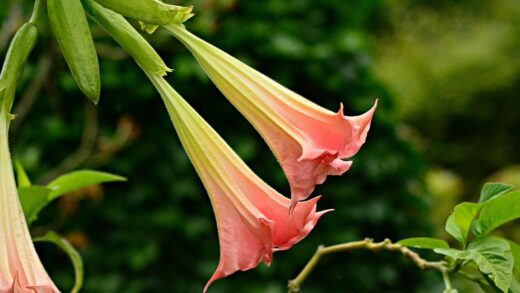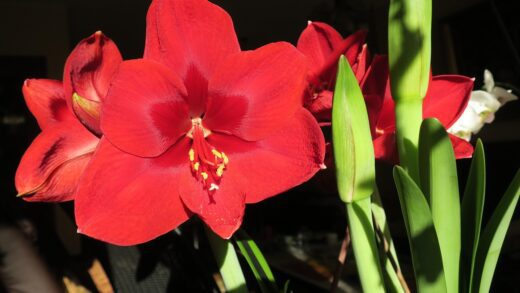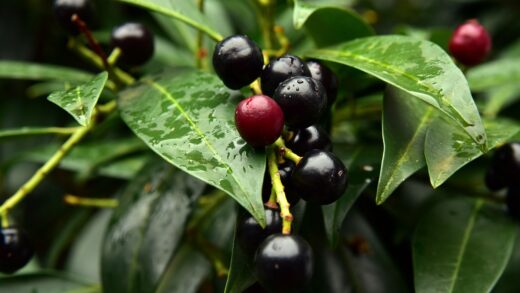Providing the correct amount of light is one of the most fundamental aspects of successfully cultivating the Taiwanese toad lily. This plant’s light requirements are a direct reflection of its native habitat on the shaded, moist floors of forests in Taiwan. Understanding and replicating these specific conditions in your garden is paramount to achieving a healthy plant with lush foliage and a spectacular display of its unique, orchid-like autumn flowers. Getting the light wrong is one of the most common reasons for failure with this species, as both too much and too little light can lead to significant problems. Therefore, a careful assessment of your garden’s light patterns is the essential first step in choosing the perfect home for this shade-loving gem.
The ideal light condition for the Taiwanese toad lily is partial shade or dappled sunlight. This mimics the environment under a high, leafy canopy of trees, where direct sunlight is filtered and broken up, creating a mosaic of light and shadow on the ground below. In a garden setting, this can be achieved by planting it under the canopy of deciduous trees, on the east side of a building where it will receive gentle morning sun but be protected from the harsh afternoon sun, or in a woodland garden setting amongst other shade-tolerant plants. This type of light provides enough energy for the plant to photosynthesize effectively without the stress of intense solar radiation.
Full shade, especially the deep, dark shade found under dense evergreens or on the north side of a tall wall, is generally not ideal. While the Taiwanese toad lily will likely survive in deep shade, its performance will be significantly compromised. In these low-light conditions, the plant will tend to become leggy and stretched as it reaches for any available light. The foliage may be sparse, and most importantly, flower production will be greatly reduced or even non-existent. The plant needs a certain amount of light energy to be able to form flower buds and sustain its late-season bloom.
Conversely, too much direct sun is the most common and damaging mistake made when siting this plant. The foliage of the Taiwanese toad lily is not adapted to withstand the intensity of direct midday or afternoon sun. Exposure to this harsh light will quickly lead to sun scorch, which manifests as brown, burnt patches on the leaves and crispy, dry leaf margins. This not only ruins the plant’s ornamental appearance but also puts significant physiological stress on it, weakening its overall health and making it more susceptible to pests and diseases. A few hours of gentle morning sun is generally well-tolerated and can even be beneficial, but afternoon sun should be avoided at all costs.
When choosing a location, it is important to consider how the light in your garden changes throughout the day and throughout the seasons. A spot that is shady in the morning might be in full sun in the afternoon. Furthermore, a location under a deciduous tree will be quite sunny in the early spring before the tree has leafed out, will become shadier in the summer, and will receive more light again in the autumn as the leaves begin to fall. This seasonal pattern is actually quite beneficial for the toad lily, as it provides more light in the spring for early growth and then offers protection during the hottest part of the year.
More articles on this topic
Understanding shade quality
Not all shade is created equal, and understanding the different types of shade is key to finding the perfect spot for your Taiwanese toad lily. “Partial shade” is a term often used, but it can be ambiguous. Generally, it refers to an area that receives between three and six hours of direct sun per day. For the toad lily, this sunlight should ideally occur during the cooler morning hours. An east-facing garden bed, which is illuminated by the morning sun and then shaded for the rest of the day, often provides the perfect balance.
“Dappled shade” is perhaps the most ideal condition for a toad lily. This is the shifting, filtered light found beneath deciduous trees with a relatively open canopy, such as birches, locusts, or Japanese maples. The leaves of the trees act as a natural filter, breaking up the direct rays of the sun and casting a moving pattern of light and shadow on the ground. This provides the plant with plenty of bright, indirect light to fuel its growth without the risk of scorching the leaves. This environment most closely resembles its native woodland habitat.
“Full shade” describes an area that receives less than three hours of direct sunlight each day, with the remainder of the day being in filtered or indirect light. While the toad lily can grow in full shade, it will perform best if the location still receives bright, indirect light. This is often referred to as “open shade,” such as the area on the north side of a house that is not obstructed by overhanging trees. It is the deep, dark shade under dense, low-hanging evergreens or between two closely spaced buildings that should be avoided, as the light levels here are often too low for good flower production.
When evaluating a potential planting spot, observe it at different times of the day—morning, noon, and late afternoon. This will give you a clear picture of how much direct sun the area receives and for how long. Remember that the sun’s path is higher in the sky during the summer than in the spring or fall, so a spot that is shady in May might receive more direct sun in July. Taking the time to do this observation before you plant will prevent the need to transplant a stressed and unhappy plant later on.
More articles on this topic
Signs of incorrect light exposure
The most obvious sign that your Taiwanese toad lily is receiving too much sun is leaf scorch. The leaves will develop brown or tan patches that look dry and burnt, and the edges of the leaves may become brown and crispy. This damage is irreversible for the affected leaves. In addition to scorch, the overall color of the foliage might appear washed-out or yellowish-green instead of a deep, healthy green. A sun-stressed plant may also wilt during the hottest part of the day, even if the soil is moist, because the leaves are losing water through transpiration faster than the roots can absorb it.
In conditions of excessive sun, you may also notice that the plant’s growth is stunted. While it might seem counterintuitive, the stress from too much sun can inhibit the plant’s overall development. The plant diverts its energy to coping with the stressful conditions rather than putting on new growth. Flower production may also be negatively affected. While some sun is needed for blooming, the stress from excessive sun can actually reduce the number of flowers or cause the buds to drop before they open. The plant is simply trying to survive, not thrive.
On the other end of the spectrum, the primary sign of too little light is etiolation, or “legginess.” The stems of the plant will become elongated, weak, and floppy as they stretch towards the nearest light source. The spacing between the leaves on the stem (the internodes) will be greater than normal, giving the plant a sparse and unkempt appearance. The foliage itself may be larger than usual but will be a pale green color due to a lower concentration of chlorophyll.
The most significant consequence of insufficient light is poor flowering. A Taiwanese toad lily grown in deep shade may produce very few flowers or, in many cases, none at all. The plant simply does not receive enough light energy to initiate the budding process and support the development of blooms. If you have a toad lily that has been in the ground for several years and produces healthy-looking foliage but never flowers, the most likely culprit is not enough light. Moving it to a location with a few hours of gentle morning sun or bright, dappled shade will often solve the problem.
Light needs throughout the seasons
The light requirements of the Taiwanese toad lily can be seen as evolving throughout the seasons, a process that is well-accommodated by planting it under deciduous trees. In the early spring, before the trees have leafed out, the plant benefits from the increased sunlight reaching the forest floor. This early-season sun warms the soil and provides the energy needed for the plant to emerge from dormancy and put on its initial flush of growth. This period of higher light exposure is crucial for building a strong foundation for the season.
As summer arrives and the deciduous canopy overhead fills in, the amount of direct light reaching the toad lily is significantly reduced. This is a critical adaptation, as the newly dense foliage of the trees provides a natural sunblock, protecting the toad lily’s tender leaves from the intense heat and high-angle sun of the summer months. The plant spends this time in the cool, dappled shade, focusing on vegetative growth and building up the energy reserves it will need for its autumn flowering display.
During the autumn, as the days shorten and the sun’s angle becomes lower, the leaves of the deciduous trees begin to change color and fall. This process gradually opens up the canopy once again, allowing more light to reach the toad lily. This increase in light coincides perfectly with the plant’s budding and flowering period. The additional light energy helps to fuel the development of its intricate flowers, ensuring a vibrant and long-lasting display at a time when much of the garden is beginning to fade.
In winter, after the plant has gone dormant and the trees are bare, the leafless canopy allows winter sunlight to reach the ground. While the plant is not actively growing, this sunlight can help to passively warm the soil on clear days, which can be beneficial in moderating extreme ground temperatures. This natural, seasonal cycle of changing light conditions is precisely what the Taiwanese toad lily is adapted to, and replicating it is the key to making this plant feel at home in your garden.


















